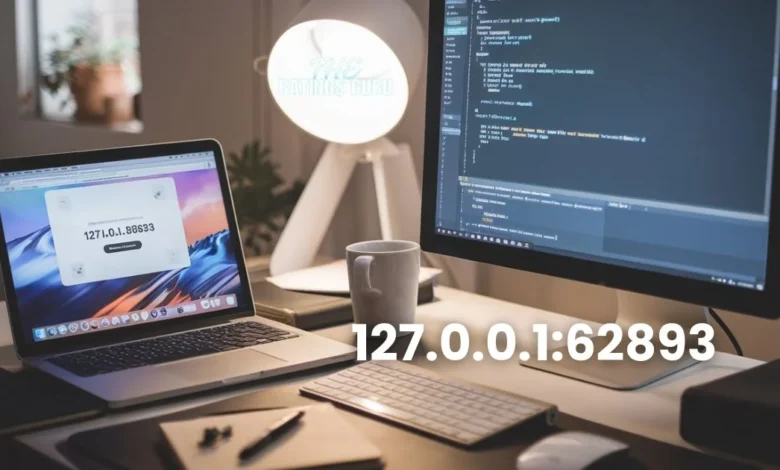The Definitive Guide to 127.0.0.1:62893: Localhost and Custom Port Explained

For developers, network administrators, and anyone involved in software development, understanding the workings of localhost is crucial. One of the most common terms in this context is 127.0.0.1:62893, a combination that is essential for running and testing applications locally.
In this guide, we’ll dive deep into what 127.0.0.1:62893 means, how it works, and why it’s significant for modern software development. By the end of this article, you’ll have a clear understanding of the importance of 127.0.0.1:62893 and how to leverage it for efficient development workflows.
Breaking Down 127.0.0.1: What is Localhost?
The IP address 127.0.0.1 is universally known as the localhost. It is a loopback address that allows a computer to communicate with itself. When a request is made to 127.0.0.1, the computer sends the traffic to itself rather than across a network, making localhost an essential tool for testing and debugging network services.
Here’s how 127.0.0.1:62893 works:
- 127.0.0.1: Refers to the loopback IP address. It is reserved specifically for the host to connect to itself.
- 62893: This is a port number, which indicates a specific entry point for services running on the localhost. Port numbers help the system distinguish between different services or applications running simultaneously.
Why Is Localhost Important for Development?
Localhost, and by extension, 127.0.0.1:62893, plays a critical role in the software development lifecycle. Here are a few reasons why it is indispensable:
- Isolated Testing Environment: Developers can test their code in a private, local environment without needing an external network. This allows for quick iterations and debugging without risking exposure to the broader internet.
- Faster Development Cycles: Since all traffic stays within the local machine, responses are instant. This helps to quickly verify that a service, API, or application works as expected.
- Improved Security: Testing on 127.0.0.1:62893 isolates your application from external threats. When running on localhost, there’s no risk of unauthorized access since no external network is involved.
By leveraging 127.0.0.1:62893, developers can ensure that the applications they are building work flawlessly before deploying them to production environments.
Understanding Port 62893: What Does It Do?
Every IP address (including 127.0.0.1) can handle many services at the same time, thanks to the use of ports. A port is a communication endpoint for each service. In the case of 127.0.0.1:62893, the 62893 port refers to a specific service running locally on your machine.
The Role of Custom Ports in Development
Port numbers range from 0 to 65535, and certain numbers (like 80 for HTTP and 443 for HTTPS) are well-known and reserved for specific services. When developing software, it’s often necessary to use non-standard ports, like 62893, to avoid conflicts with these reserved ports.
For instance, a developer might be running multiple web servers, databases, or microservices on their machine. By assigning different ports to each service (e.g., 127.0.0.1:62893 for an API and 127.0.0.1:3000 for a frontend), developers can ensure that everything runs smoothly without interfering with each other.
ALSO READ ABOUT SECRETS NUMBER 9.02 8.9975 13/5
How to Use 127.0.0.1:62893 in Real-World Development
Let’s now explore some practical examples of how 127.0.0.1:62893 can be used in development and testing.
Testing a Local Web Application
Imagine you’re developing a web application that consists of a backend API and a frontend interface. You could configure the backend to run on 127.0.0.1:62893 and the frontend on 127.0.0.1:3000. This allows you to develop and test both services locally on your machine before pushing them to a production environment.
Running your backend on 127.0.0.1:62893 ensures that it is isolated from the internet, and you can thoroughly test your API endpoints, data handling, and interactions with the frontend.
Debugging with 127.0.0.1:62893
Another powerful use case of 127.0.0.1:62893 is debugging. Localhost allows you to simulate real network behavior without needing to deploy your application to an external server. By connecting to 127.0.0.1:62893, you can check for issues, resolve bugs, and validate functionality in a safe and contained environment.
Multiple Services on One Machine
Using a custom port like 62893 becomes even more essential when running multiple services locally. For example, you could have a database running on port 5432, a web server on port 80, and a secondary service on 127.0.0.1:62893. Each service operates independently, and you can easily switch between them by accessing different ports.
Common Issues with 127.0.0.1:62893 and How to Resolve Them
While 127.0.0.1:62893 is a robust tool for local development, there are a few common issues developers may encounter.
Port Conflicts
One of the most frequent problems occurs when multiple services attempt to use the same port. If you try to run two different services on 127.0.0.1:62893 simultaneously, you will encounter a port conflict.
- Solution: To resolve this, you can use a tool like netstat or lsof to check which process is using the port. Once you identify the service, you can either stop it or assign a different port to your application.
Firewall Restrictions
Sometimes firewalls or security software might block access to certain ports, including 62893. This can prevent services from running correctly on 127.0.0.1:62893.
- Solution: Adjust your firewall settings to allow traffic on port 62893. In most cases, you can add an exception for localhost connections, ensuring that 127.0.0.1:62893 is accessible.
Application Configuration Errors
Occasionally, misconfigured application settings can prevent services from binding correctly to 127.0.0.1:62893. If your application isn’t properly set to listen on this specific IP address and port, it won’t function as expected.
- Solution: Double-check your configuration files to make sure the service is bound to 127.0.0.1 and the port is correctly specified as 62893. This ensures that your application communicates through the right channel.
FAQs About 127.0.0.1:62893
What is the significance of 127.0.0.1:62893?
127.0.0.1:62893 is used for running and testing local applications or services on a machine. The IP address 127.0.0.1 points to the local machine, while 62893 specifies the port where the service is running. It’s commonly used in development environments for testing purposes.
How can I check if port 62893 is being used?
You can use tools like netstat or lsof to check if port 62893 is being used by another process. These tools list all the active ports and their associated services, helping you identify potential conflicts.
Why is localhost referred to as 127.0.0.1?
The IP address 127.0.0.1 is the loopback address assigned to localhost. It is a special address reserved for the local machine, allowing a computer to communicate with itself without involving external networks.
Can I change the port number from 62893?
Yes, you can change the port number from 62893 to any other available port. However, ensure the new port is not already in use by another service to avoid conflicts.
Is it safe to use 127.0.0.1:62893 for testing?
Yes, using 127.0.0.1:62893 is safe for local testing. Since the communication happens internally on your machine, it is isolated from the external internet, minimizing security risks.
Conclusion
127.0.0.1:62893 is a vital tool for developers, offering a robust and secure way to run and test applications locally. By leveraging the power of localhost and custom ports, developers can streamline their workflows, troubleshoot issues, and ensure that their applications perform perfectly before deploying them to production.
If you’re working in development, understanding and utilizing 127.0.0.1:62893 is an essential part of the process that will make your life easier and your projects more efficient.








